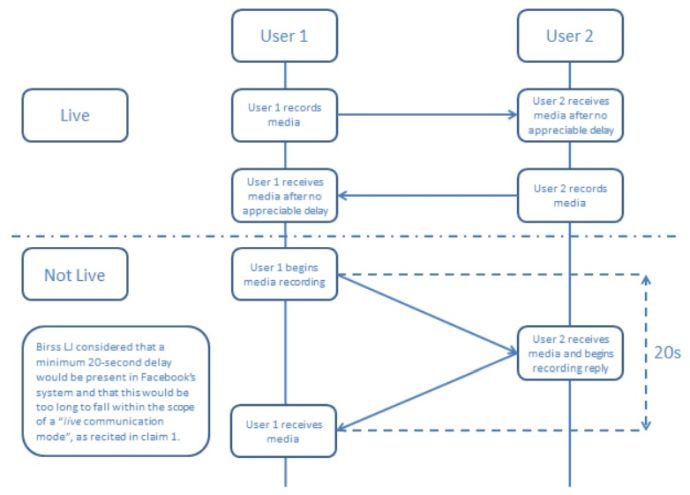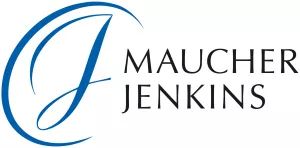- within Intellectual Property topic(s)
- in South America
- in South America
- in South America
- in South America
This High Court case concerned Voxer's European (UK) Patent No. 2393259 entitled Telecommunication and Multimedia Management Method and Apparatus. Facebook sought to revoke the patent on the grounds of lack of inventive step and lack of sufficiency. Voxer counterclaimed that Facebook's live video functionality, accessible via Facebook and Instagram, infringed their patent.
The case dealt with claim construction. Facebook relied on the glossary included in the patent to support their construction of terms. However, Birss LJ disagreed with Facebook's interpretation which only relied on the glossary. He considered that express definitions provided in the specification are relevant, but would rarely be determinative. Moreover, he considered that a glossary sometimes contradicts reality and is not intended to be limiting. Birss LJ commented that the natural meaning of the words of the claims, the specification as a whole and common general knowledge are also important when construing claim integers.
The extent to which claim amendments can affect the scope of a claim was also discussed. Voxer had made a post-grant amendment to claim 1. The UK IPO deemed this amendment to add subject matter. In order to address the UK IPO's objection, Voxer subsequently amended claim 1 to include a narrower feature, which was disclosed in the application as originally filed. Facebook argued that because Voxer had amended claim 1 to address the added subject matter objection, Voxer must have intended strict compliance with the language used to address the added subject matter objection. Birss LJ considered that, because the amendment was made to address internal validity (i.e. the amendment was not made in view of prior art), the amendment to introduce a narrower feature did not mean that Voxer intended strict compliance with the literal meaning of claim 1.
Claim 1 of the patent required a "live communication mode". Facebook allows a user to broadcast a "live" video to other users, which is typically used as a one–way route of communication. There is a 10-second built-in delay during broadcasting. Voxer asserted that this "live" video functionality fell within the scope of claim 1 and thus Facebook infringed the patent. Voxer reasoned that a first user could broadcast a "live" video and a second user, having viewed the video broadcast from the first user, could start a "live" video broadcast and the first user could immediately decide to view the second user's broadcast. Voxer also argued that because Facebook described the broadcasting as "live", then it must fall within the scope of the term "live communication mode".
Birss LJ considered that such back-and-forth broadcasting was considered to be a "conversation" and that a minimum 20-second delay would be present. Importantly, he considered that the minimum 20-second delay was too long to fall within the scope of a "live communication mode", as recited in claim 1. Thus, Facebook's "live" video functionality did not infringe the patent, directly or on the basis of equivalents. The fact that Facebook described their video functionality as "live" did not necessarily mean that Facebook's "live" broadcasting has the same meaning as "live" as specified in claim 1.

Facebook also advanced a Formstein defence to infringement. A Formstein defence is an extension of the Gillette defence to a case of equivalents. A Gillette defence requires the defendant to demonstrate that the alleged infringing device would have lacked novelty or inventive step at the priority date of the patent, under a normal interpretation of the claims. The Formstein defence was established under German law and has been followed in the Dutch Court of Appeal.
The Formstein defence was first discussed in the UK courts in Technetix v Teleste [2019] EWHC 126 (IPEC). The Formstein defence relates to a situation where the defendant's device is a) found to infringe the patent by the doctrine of equivalents, but also b) found to lack novelty or be obvious over the prior art. Facebook argued that because their system was obvious in view of the prior art for the patent, the patent's scope must be held to its normal construction, so they could not infringe the patent. Although Birss LJ was not required to consider the Formstein defence, he supported its use under UK law and considered how it should be applied. He stated firstly that if a claim on its normal construction was valid, then it seems harsh to invalidate it on the basis of equivalents. Secondly, he considered that the UK should recognise the Formstein defence because other EPC contracting states have done so.
In summary, Birss LJ held that the patent was not infringed either on a normal construction or when considering equivalents. Amongst other things, as set out above, Facebook's "live" video functionality did not provide a "live communication mode" within the meaning of claim 1 and did not store a copy of messages at each hop along the network path. He found that the patent lacked an inventive step and was thus invalid.
Originally published 19 January 2022
The content of this article is intended to provide a general guide to the subject matter. Specialist advice should be sought about your specific circumstances.


